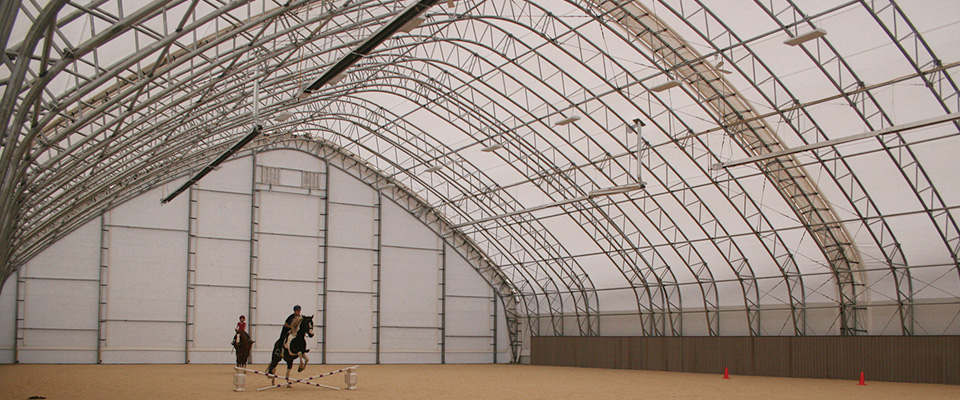Horse Arena Footing
June 8, 2017
If setting up a riding arena for the first time, deciding on footing material is a topic one will have to address. There are a number of different materials for arena footing, but there are a few things to keep in mind when coming up with a composition that best fits particular arena uses.
Deciding where to get materials for flooring is significantly important when conceptualizing an arena. Some folks choose to source their flooring material from the farm or other local sources. Some choose to import materials from outside sources, both have advantages and drawbacks.
Whether it is better to source locally or bring in external material is largely dependent upon a region’s soil composition. Even similar soil types can be significantly different in particle size and shape, so sourcing some material from outside can be a good idea. Generally, the first decision to make is where to get footing material from to best fit individual arena needs. Many arenas have a flooring composite of two or more materials and use some manure that is naturally mixed into the footing. Be careful not to use too much manure or organic material as it adds dust problems, creates odors and tends to compact.
Luckily for ClearSpan customers, ClearSpan Fabric Structures has a number of equine building experts on staff. They can help you not only create the building that is ideal for you, but also provide invaluable advice on the best footing for your specific needs. This takes out a lot of the guess work for first-time arena owners, ensuring they get an arena the functions best for them.
Footing material is only the very top layer of an arena’s flooring. For support and a strong base, one should have a compacted sub-base of subsoil below a well-drained, well-graded aggregate that is from 4 to 6 inches thick. It is recommended to put landscape fabric separating the base from sub-base materials. Once an even and uniform base has been set, it is time to compose loose, well-drained footing material at a thickness of about 3 to 6 inches.
Common arena footing materials include sand, wood, shredded rubber and, most commonly, stone dust. A mix of materials is ideal to create a diverse footing less inclined toward compaction. Desirable footing is loose and well-drained, but also a heavy material that holds enough moisture to minimize constant watering. Some folks use salt in their composition, which helps retain moisture and minimize dust. Others may use a wax, oil or polymer coating to control dust. The idea is to maintain a happy medium for a comfortable and even ride for horses.
The greatest challenge to good quality footing is compaction. Hard, compacted footing can lead to uneven riding and serious injuries for horses and riders alike. What one should look for when choosing flooring material for a riding arena are particles that are less angular in shape, which provide space between particles, as opposed to angular shapes that fit nicely together and essentially compact the material. Arena surfaces covered with sub-angular particles has a wide range of particles allow them to rest on one another while the rounded edges create more air between the particles.
Footing material will undergo shifts over time and will essentially need to be added to or replaced to maintain a stable floor for horses, but generally can be sourced from a combination of places to make up the best recipe for individual arenas.
Contributed by Amanda Williams

